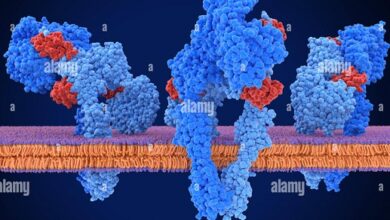Difference between empirical formula and molecular formula Similarities and FAQs
Empirical formula and molecular formula
In this atrticle we will provide you the difference between empirical formula and molecular formula Similarities and FAQs.
What does empirical formula mean
The empirical formula is a mathematical expression used to describe the molecular structure of chemical compounds. These formulas show the number and type of atoms present in an individual molecule, as well as their relative arrangement. The empirical formulation , also known as the simplified, abbreviated, or elementary formulation, does not include information about the relative positions of the atoms within the compound. Instead, it simply identifies the number and type of atoms present in a single chemical compound.
What does molecular formula mean?
A molecular formula is a written representation of the chemical structure of a compound. It is made up of the chemical symbols corresponding to each atom, together with the atomic number to indicate the correct amount of each element present in the compound. The molecular formula is also known as the “empirical formula” as it provides basic information about the type and relative amount of the element or compounds involved in a chemical reaction. For organic compounds, molecular formulas include additional information about their functional groups (the radicals) and their isomerism (their arrangement). Quantitative analysis of molecular formulas allows the total molar mass to be determined to help better identify the final product resulting from an experiment.
Similarities Between Empirical Formula and Molecular Formula
- Empirical and molecular formulas are two related concepts Chinese . In addition, it was used to describe the chemical composition of a substance.
- Both provide information about the atoms present, that is, the atomic number, the types of covalent bonds between them, and the total number of atoms involved.
- The main difference between the two formulas lies in the way these properties are expressed. While the molecular formula , also known as the structural formula, represents the chemical elements through symbols and their three-dimensional arrangement through the use of lines or arrows;
- On the other hand, the empirical formula.
- Contrary to the aforementioned molecular model, it simplifies all of the above by lumping together all the individual atoms to simply indicate how much of each element is present without breaking down its more specific characteristics.
Differences between empirical formula and molecular formula
- An empirical formula is a symbolic representation of a chemical compound in which the symbols for the elements are Chinese . In addition, it was used to indicate the number of atoms present in each molecule of the compound.
- These formulas are known as empirical formulas because they only indicate the relationships between the atoms, not their exact masses.
- On the other hand, a molecular formula represents the exact number and relative proportion of the chemical elements in a compound.
- These formulas can show both possible commercially available structures and those impossible to actually formulate due to their very high reactivity. Therefore, molecular formulas are more detailed and precise than empirical formulas.
Frequent questions
How is the empirical formula calculated?
The empirical formula is calculated using the chemical elements of a compound. To calculate the empirical formula, one must first determine the number of atoms for each element in the molecule of the compound. These amounts are then divided by the smallest possible number to get the proper conversion factors. Finally, the factors are multiplied to find the correct relationship between the different elements and thus form the empirical formula.
What is the empirical formula and examples?
The empirical formula is a mathematical representation of the chemical composition of a substance. It is expressed as the number of atoms of each element in a molecule, indicated by their chemical symbols and the relative numbers in parentheses. Example: 1) Water (H2O): This formula means that there are two hydrogen (H) atoms and one oxygen (O) atom. 2) Glucose (C6H12O6): This formula indicates that there are six carbon (C) atoms, twelve hydrogen (H) atoms, and six oxygen (O) atoms.
What is the molecular and empirical formula?
The molecular formula is a symbolic representation of the chemical structure of a compound. It is made up of the chemical symbols for each atom in the compound, along with numbers that indicate how many times each atom occurs. For example, the molecular formula for water is H2O (two hydrogen atoms and one oxygen atom). The empirical formula describes the simplest and most relative number of atoms present in a compound. It is determined by dividing all molecular quantities by the highest possible common factor. For example, the empirical formula for water is HO (one hydrogen atom and one oxygen atom).
How to go from molecular to empirical formula?
To convert a molecular formula to an empirical one, simply divide each number of atoms by the smallest number that makes them divisible by each other. For example, to convert CH2O (molecular formula of water) to its empirical formula H2O, we divide 1 C by 2 and 1 O by 2 to get H2O.
What is a molecular formula and example?
A molecular formula is a representation of the atoms that make up a molecule. These formulas show the number and type of atoms present in the molecule. For example, the molecular formula for water (H2O) indicates that there are two hydrogen (H) atoms and one oxygen (O) atom.
How is the molecular formula made?
The molecular formula is a chemical description that describes the number and type of atoms present in a molecule. It is expressed as a set of chemical symbols, where each symbol represents a chemical element, followed by its atomic number (which indicates how many times it is present). For example, to form water (H2O), there are two hydrogen atoms (symbolized as H) and one oxygen atom (symbolized as O). The molecular formula of water would then be: H2O.
How to calculate the molecular formula examples?
The molecular formula is a representation of the chemical structure of a compound. It is calculated by adding the total number of atoms in the compound and multiplying them by the factors corresponding to each element involved. Examples: 1) Carbon dioxide (CO2): The molecular formula for this compound is C + 2O = CO2. 2) Water (H2O): The molecular formula for water is H + 2O = H2O. 3) Ammonia (NH3): The molecular formula for ammonia is N + 3H = NH3.
What is empirical formula and molecular examples?
Empirical Formula: An empirical formula is a shorthand notation that describes the relative proportion of the elements in a compound. For example, common salt (sodium chloride) has the empirical formula NaCl, where the chemical symbols for sodium (Na) and chlorine (Cl) are used to represent their individual atoms. Molecular Formula: A molecular formula is a type of chemical notation Chinese . In addition, it was used to describe the exact composition of a compound or molecule. These are more detailed than the empirical formulas and show not only the relative proportions between the elements, but also qualitatively how many atoms there are in total. For example, water has its own molecular formula H2O; here, “H” stands for hydrogen and “O” stands for oxygen, with two hydrogen atoms for every oxygen atom).




